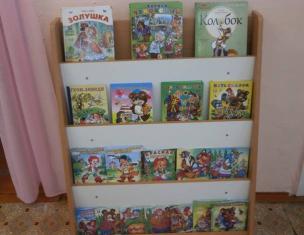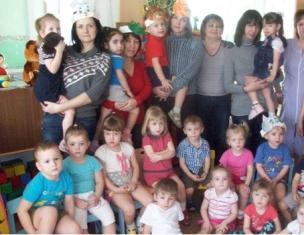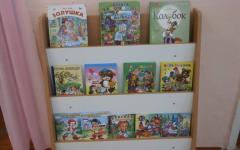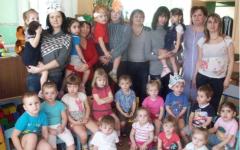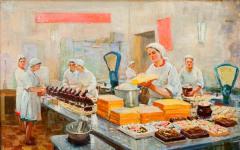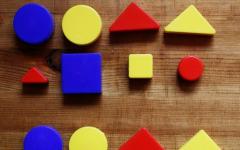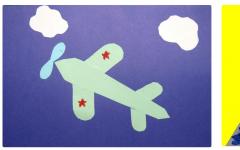Creating images from natural material, children not only (and not so much) reflect their structure, how much is transmitted, express their attitude. Because of this, designing from natural material in its nature closer to the art type. That is why it is so important to move away from the traditional methodology, the purpose of which is to teach children to create specific crafts from a particular material. Teacher's task - to teach children to feel the specifics of natural material, see the palette of its paints, forms, textures and on this basis to create a variety of artistic images. This approach, on the one hand, develops the imagination, creativity, on the other, brings children to mastering the generalized way to build an image based on visibility.
O. M. Dyachenko allocates two basic qualitatively different methods of action to build an imaginary image. We are talking
1) about " cOMPLETEMENT"When in an unfinished picture, a child sees a specific subject;
2) O " inclusion"When the figure defined in the figure turns into a secondary element of an imaginary image.
The researcher believes: the second method is characterized by a higher level, since it leads to originality and productivity of solutions. As shown by our jointly with O.A. Christ research, for the development of creative imagination, it is fundamentally important to teach children the ability to analyze the material (in the aggregate of all properties) at the beginning as the basis of the future image created by the "COMPOSITION" method (Fig. 1), then as a part that is significant for building a holistic image "Including "
Fig. 1. Mind "COMPLETEMENT" of Natural Material
This is, first; Secondly, it is necessary to form such skills, methods of design, how to "complete" the image, "change the spatial position", "remove excess", "Combine" (Fig. 2).
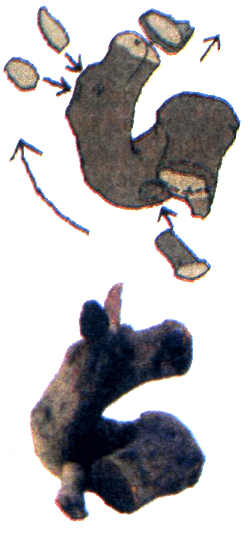
Fig. 2. The main techniques of design when creating a craft
Based on these provisions, we have developed a three-stage learning system.
First stage of learning, senior group
Main tasks: a) form the ability to analyze natural material as the basis of the future craft (select roots, branches, knots); b) teach the three main techniques for building an image by the method of "defining" - the ability to "change the spatial location", "hold", "clean up too much". The last reception (unfortunately, it is almost not used in practice) significantly affects the development of imagination.
The method "COMPLETEMENT" is a fundamental, since it allows you to form the ability to see the whole before parts. We note: in this way, children create several original, significantly distinguished images on one basis. It is at the basis of his assimilation that another method is born - "inclusion".
To solve the tasks set, at least six classes and two excursions in the park (forest park, forest) should be held.
On the first twoclasses Children are divided into subgroups and learn to consider natural material, all possible images in configurations. The material is prepared in advance. It can be the average value of the roots, branches, the knots in which you can "see" a specific image. Already in the classroom in the group room, the Old Man's Doll will help develop the course of the action: it will offer to carefully consider the natural material unfolded on the table, to imagine, to whom his pretending friends look like, and then practically embody the images presented, taking advantage of a plasticine and any small material . "Practically" means: children will mainly strengthen the figures, suggested by the configuration of the material to the stand, determine their spatial location, supplement the images with small natural material and plasticine.
The next session is also prepared roots, branches, hasshes that differ from previous ones that their configuration should cause different associations so that it is possible to construct two or three images on one basis. During the dialogue, considering the material with the help of an old ladder, the teacher helps children see not one "mystery": turning out the material in different directions, closing the hand some part of it or placing a small part, demonstrates the techniques for creating different images on one basis. Thus, the teacher brings children to the development of three important techniques of "defining" natural material as a holistic image - to the fact that you can change the spatial position, remove too much and complete. In addition, encourages statements. In other words, the general discussion unfolds.
First child. It looks like Baba Yaga's house.
Educator. And where is the door?
Second child. Yes, and courier legs are not here.
First child. The door is not needed, because Baba Yaga flies into the pipe. Here it is necessary to do the legs, then there will be a real grandmother's home.
On the second lesson most children will prefer to receive completion and only a minor part will try to use the reception "Remove the extra". In this case, the educator, if children are asked, blends or cuts off extra parts. As a result, it becomes possible to construct up to 20 different crafts, which the authors themselves will give characteristics ("cheerful clown", "tricky fox with a ringer", "thin and evil wolf", "hungry crocodile"; fig. 3).
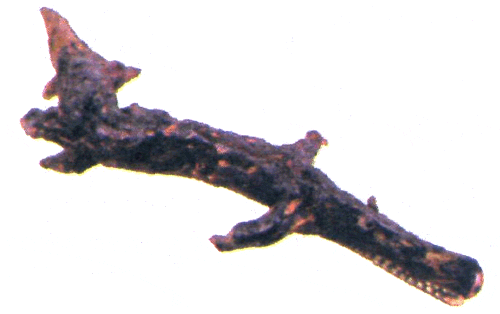
Fig. 3. The image created by the reception "Remove the extra"
Excursion to the nearby park (or forest park) - with two baskets, big and smaller, for collecting natural material - to give the total two first classes. An old-fashioned ladner will help support interest; I will show, say, the road to the clearing, where his forest friends live, will remind you that it is necessary not only to collect material, but also carefully examined it, determine what it looks like (or with whom) can be compared with. The collected material is prepared by joint efforts to further practical work (decomposed on the boxes, if necessary, is cleared, dried, discharged).
Such training is not only developing creative imagination in children, but also, not less important, it is raising a careful attitude towards nature. After all, children only collect material - bumps, branches, bizarre knots, and do not river, do not break, do not cut. They learn to relate to nature as a living organism. At the same time, we emphasize, experience the experience of safe and cautious handling of natural material: an unfamiliar plant does not touch the grass, the grass can be cut down, about the sharp bitch.
On the third and fourth classesa problem tasks are proposed: the task is to create crafts with a support for a specified basis. The material will serve new items: pieces of wood bark of different sizes and configurations, dry wooden mushrooms (as the basis). Children should carefully consider them and determine what they look like, and fulfill their intention (Fig. 4).
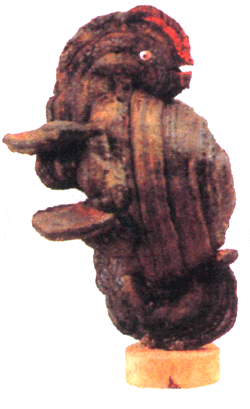
Fig. 4. Crafts from wood mushroom
On the third lesson Children create individual crafts. Most by this time can already build enough original images on the basis of a new material. And although the reception is still prevailing, some will take advantage of the reception to "remove the extra". Basically, children's crafts will represent the figures of animals, people, fabulous characters and not very different from the specified base. The created image is dictated primarily by the configuration of the material. It is not excluded that some children initial design in the process of work will change: the submarine will turn into fish ("This is a magic fish. She shows the way the ship. If necessary, the fish will turn into a boat to save people"). However, the majority at this stage are strictly adhered to the plan. Yes, technical difficulties will emerge - because it is necessary to choose an additional detail, attach it to the base or deepen the slot to get a mouth or open beak, etc. Naturally, the problem is solved with the help of a teacher. Others will work, practically without changing in the selected basis. So, one child can see a crocodile fall in a piece of wood bark, the other is in the tree mushroom cloud. These crafts of the teacher necessarily preserves, as they can be used in the next lesson when creating complex compositions.
On the fourth lesson children work subgroups and, using all crafts, create different compositions. (Fig.five). Selection and creation of composition - two interrelated points. Practice shows: often kids, choosing a favorite craft, inventing the plot on her, nevertheless, or another, or a little change it.
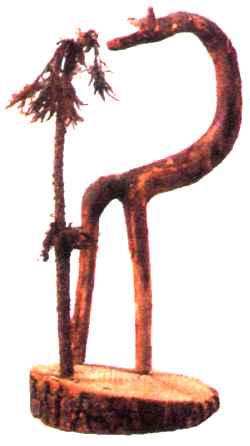
Fig. 5. A simple composition of two crafts created earlier.
This comes them with the composition. The educator actively participates in this process: Reminds the crocodile, the cloud, thereby helps to deploy the composition to a more interesting direction; Moves every group to come up with a short story.
Subject the last two classes -designing on the plan. Having defined the plan, children are independently taken away natural material: large use as the basis of crafts, small goes on the details ("No, the ears should be big, so it's better to take a flap of maple"). This speaks about the desire to give an image expressiveness. The task of the educator is to note the original solutions and discuss them with the whole group. The subject of crafts can be repeated. However, due to the fact that another natural material is used, the images change significantly. In the design, it is still used to "complete", "remove excess". Along with the individual figures, simple compositions are created ("Girl with a dog", "family family", "Garden Stuffed and a dog"). Almost all images are based on the analysis of the material; The factors of the configuration of the material, its size prevail. To finally formal interest in design, support the desire to work with natural material, from the crafts performed in the process of classes and independent activities, an exhibition is organized in the lobby of the kindergarten. It is desirable that the children themselves presented their work. As a fixing at the end of the year, the task is given for the summer - to collect natural material, think, the basis of which composition it can be.
Second stage of training, preparatory school group
The main task is to form the ability to build the image of the "inclusion" method. For this, children are taught to analyze natural material not only as the basis of the future craft (as in the first stage), but also as a part that is significant for building a holistic image by inclusion in this integrity. Mastering this way of building an image significantly expands the functionality of natural material: the same material may be the basis of the crafts, and its detail. So, in one case, the flushed pine cone is a torso Council (with a small addition) or a bell, in a friend of an old man-slab, in the hands of which a basket, and near the dog. This topic is given at least three lessons. But first, the teacher organizes excursions to the nearby park for collecting material. Each child has a plastic bag, in adults - large packages. Note: Now children will collect material on their own; Moreover, "discuss how it can be applied.
On the first occupation which is carried out according to subgroups, children, told in advance about the future handicraft, design themselves on their own intention from the material collected on the excursion. As practice shows, most ideas coincides with the final result. The main method of constructing remains still "COMPLETE", implemented by three testes. The name of the crafts already reflects the essential features of the created image ("conductor", "Acrobat", "Soldier with a grenade"). This suggests that children see the specifics incorporated in the material itself, pick up the basis of the image specified by nature and emphasize additional details. The same "acrobat" suggests the configuration of the material. And the child will remove the extra branches, will only leave the "hands" and "legs", complement the head on the head. In the created images now there are details that emphasize the characteristic features. It may be a princess in the crown and a long skirt or a musketeer in boots, cape, a hat with a pen and a sword in hand (Fig. 6).
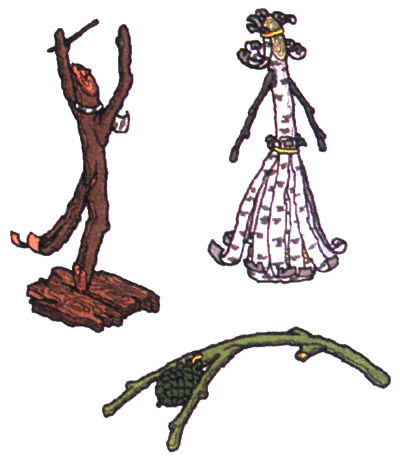
Fig. 6. Crafts from the material collected by children
Some will be able to do not alone, but two or three crafts, even interconnected with a general meaning: it is important that the teacher at the end of the class suggests children to tell about their crafts. This allows you to enable the created images into a wider context, which will lead to the desire to change, add the craft.
On the second lesson at the suggestion of the teacher, children, working subgroups, will be designed by their own design. Each receives a certain natural material as an element of the future craft. What is the task? It is important that, firstly, its handicraft was created with a support for the material as part of something whole; Secondly, the same material was used multifunctional. Note: With a rare exception to the task, children cope. Experience shows: most successfully use the specified natural material as a part or part of the holistic image, which is invented independently (Fig. 7),- Crafts are distinguished by the originality of the theme, design, expressiveness.
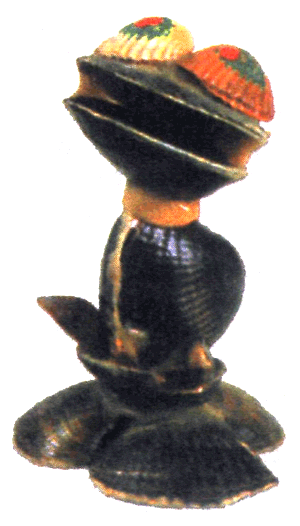
Fig. 7. Crafts from shells
It is necessary to record the attention of children at the end of the lesson: notice an interesting decision, to propose to someone from each group to tell about your craft (the story chooses the children themselves), and in the evening draw the craft and come up with a story to her. Invented adult stories write down little books, decorates children's drawings. Together with the children, he comes up with the name, draws up the cover on which the name and surname of the author is indicated.
The following, third lesson The teacher offers the task of completing the figure: distributes all the same, pre-prepared cross-shaped figures - two sticks (twigs) of the same size bonded in the middle. With support for these figures, children must come up and construct something their own. The problem is problematic, it causes certain difficulties. The fact is that the children have become accustomed to creating figures of people, animals, it is difficult for them to turn on the cross-shaped figure in a new type of construction. Nevertheless, examining carefully, they find a solution using the "COMPLEX" and "inclusion" methods. The main reception will be "completing the foundation". Some will move to the plot design ("Fisherman sits on the raft", "the mill has a fat miller," "The house has a red hat"). The other specified figure will be the basis of the crafts (raft, stand, panel); Thirdly - a piece or part in the overall design (propeller, window, wind blades, etc.). The vast majority of crafts will differ much from the specified figure.
By the same type you can spend fourth lesson. Each subgroup receives the same figure from a tutor composed of a certain material; Let's say, the first is two connected accents; The second-olh bumps on the branch; Third - straw, pulled in a certain place; Fourth cortex cortex with fixed in the center with a stick (Fig. 8).
Fig. 8. A dreaded beam of straw as the basis of various crafts
Task: Each group creates its own craft with a support on the figure that received. Children pretty long time to think about the future design, nevertheless the task is performed because they include the material as a part of the whole. We note, on all these classes, technical skills are being implemented: preference is given to simple operations - to pull the thread, grind with glue, color thin wire, plasticine; More complex actions - work with a sewer, knife, varnishing - performs an educator.
After the last two classesthe teacher makes it possible for children during the week to combine the designs, come up with stories, draw them. The writings of these adult writes, drawings together with children in the book.
The third stage of learning, preparatory school group. Main tasks: 1) Expand the main methods and methods for building an image; 2) to generate the ability to embody the plan (create an image), given: a) a common plot, detailing and enriching the image; b) the specifics of natural material. To solve the tasks, two classes are held, the purpose of which is to teach children to design on their own plot. This work is organically connected with the previous activities, when it was necessary to come up with a fairy tale and include it in the plot. Themes of the last two classes the second stagesignificantly enriches the line of stories. It turns out that combining crafts, it is necessary to complete something to complete for the fullness of the plot transfer, convert the image, etc.
On the first lessonthird stagechildren seek to work in the same direction. By selecting the desired material, most often small in quality and additions, and the design of the main part, design on the plot of the invented fairy tale or some story. Such a technique, widely using methods of "COMPLETEMENT", "Inclusion", "Compassion", "Changes in Spatial Regulations", etc., puts children to the conditions of necessity not only to build an image based on visibility (material), but also verbally fix His characteristic. Thus, children develop speech. After all, it is necessary to describe in detail the hero, its appearance, character, behavioral characteristics, saturate the story with shaped noun, adjective, and comparisons. In addition, the handicap, its inclusion in the plot creates an image of a more mobile, more alive. And then the teacher can take advantage of the topics of the children's fairy tales, fables, cartoons. For clarity, we give an example of a plot design. Composition: On a birthday to a lonely hedgehog - he has no parents - guests come. (Images are prepared in previous classes.) It is a fat and cheerful hamster, swimming champion - Turtle, friendly Juda brothers, a very important turtle of Torter. Naturally, gifts are presented: Tortila - water lilies, hamster - seeds, turtle and hedge - apples (they are strengthened on needles). In the evening, together with the children, the teacher records the fairy tale "Hedgehog's birthday".
What should pay attention to? An importantly differentiated management of activities is important when the nature of the child's relationship is taken into account, its preferences in choosing means of expressiveness. In addition, one is enough to motivate the task, the other, on the contrary, needs permanent support. All problems are solvable if an adult cooperates with children, talks with them, does not teach, but decides to jointly arise questions and at the stage of embodiment, and at the stage of its implementation.
L. Paramonova,
Doctor of Pedagogical Sciences
Director of the Center for Preschool Childhood. A.V. Zaporozhets.
Figures G. Egorova
Basic concepts: designing, natural material,roots, branches, swirls, sand, defining
Paramonova L. Designing from natural material // Pre-school education. 2005. number 7.P. 90-96.


